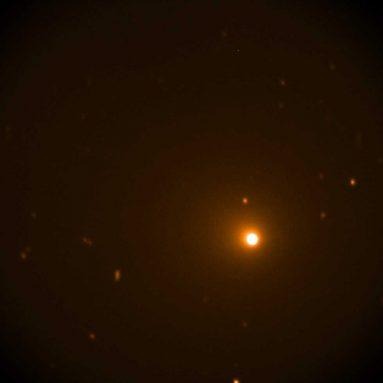NASA Aims Its Telescopic Eyeballs At The Brightest Comet Of The Year
Skywatchers have been treated over the last week to views of the brightest comet of 2018. The comet is called 46P/Wirtanen and on December 13 when the comet was 7.4 million miles from Earth NASA turned its Hubble Space Telescope towards the comet to snap visible light images.
The fuzzy glow of the comet's coma was so bright that it obscured the nucleus of the comet from view. While the images here are in visible light, the bright whitish-blue image has the blue color added to a high-resolution grayscale image snapped by Hubble's Wide Field Camera 3 instrument.
The scientists were able to study the coma of the comet, something not easily done from Earth, thanks to how close the comet came to Earth. Hubble's Chandra X-ray Observatory and the Neil Gehrels Swift Observatory were used to study how gases were released from the nucleus of the comet.
Scientists also studied what the comet ices are composed of and how gas in the coma is chemically altered by sunlight and solar radiation. NASA's Stratospheric Observatory for Infrared Observatory called SOFIA took the yellow-cast image seen here on December 16 and 17 when the aircraft was flying at 40,000-feet. SOFIA is studying the chemical fingerprints of different types of hydrogen in the comet's water.

The goal of this study is to determine the origins and history of water in the solar system, including the waters of the Earth's oceans. SOFIA's image was taken in visible light, and the yellow tint is from an orange filter to indicate the intensity of light relative to other objects. SOFIA is an interesting tool; it is a Boeing 747SP jetliner modified to carry a 106-inch diameter telescope.
